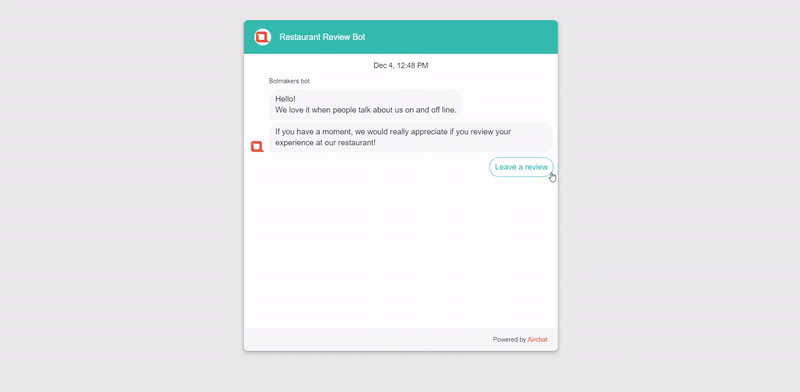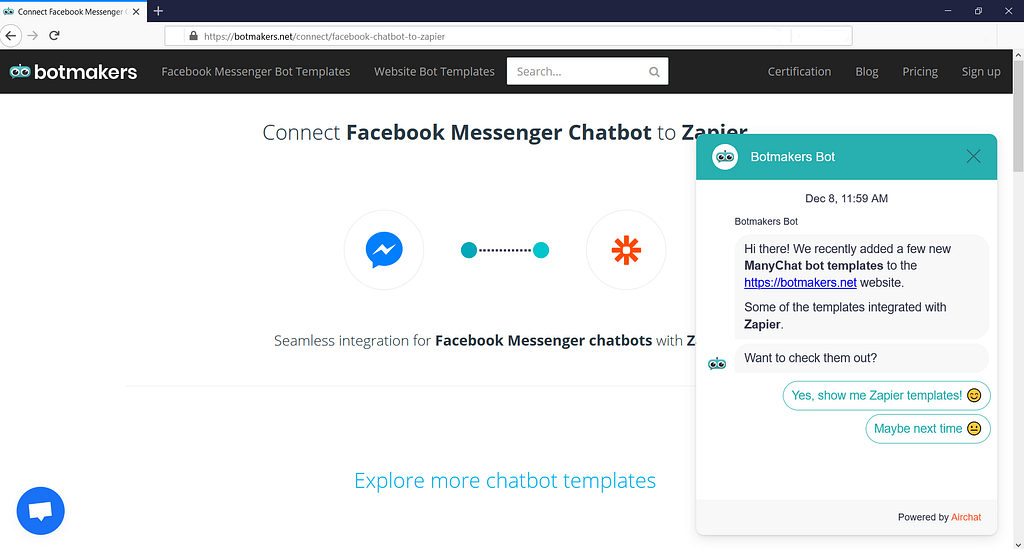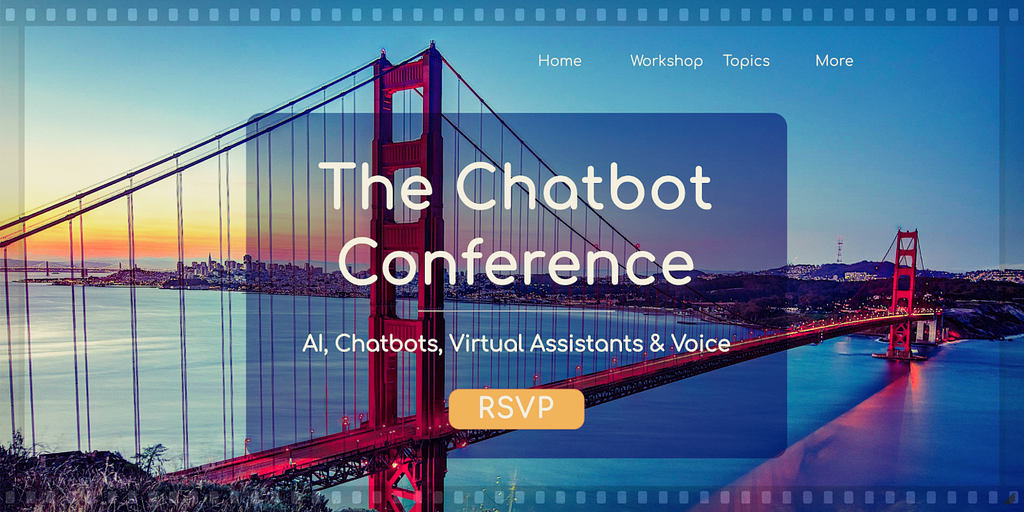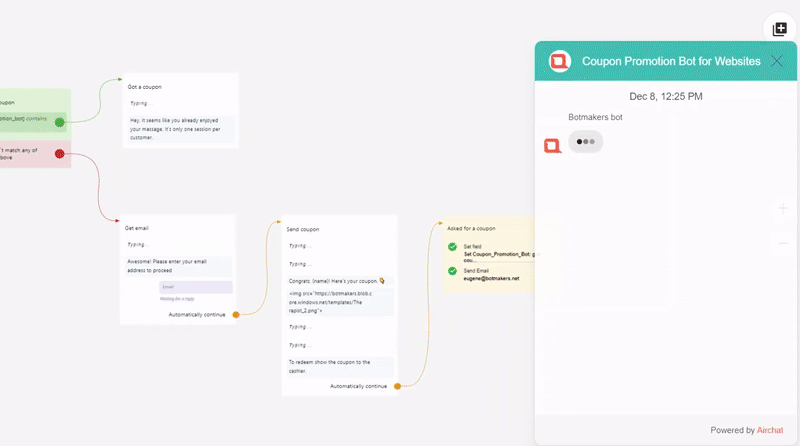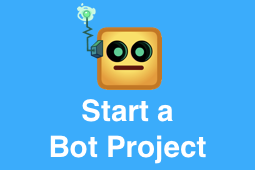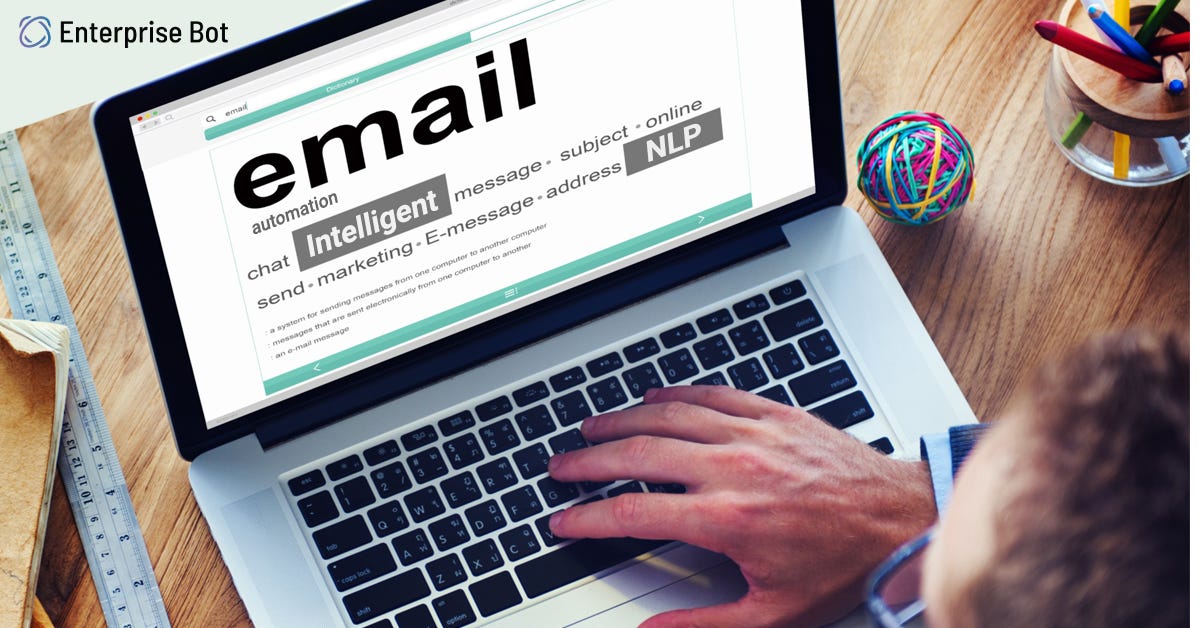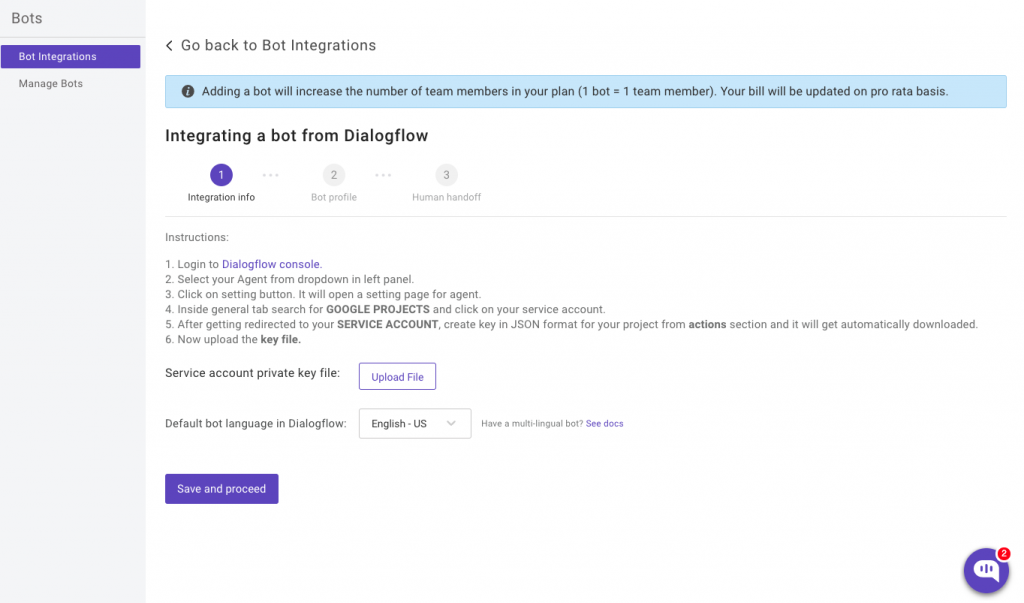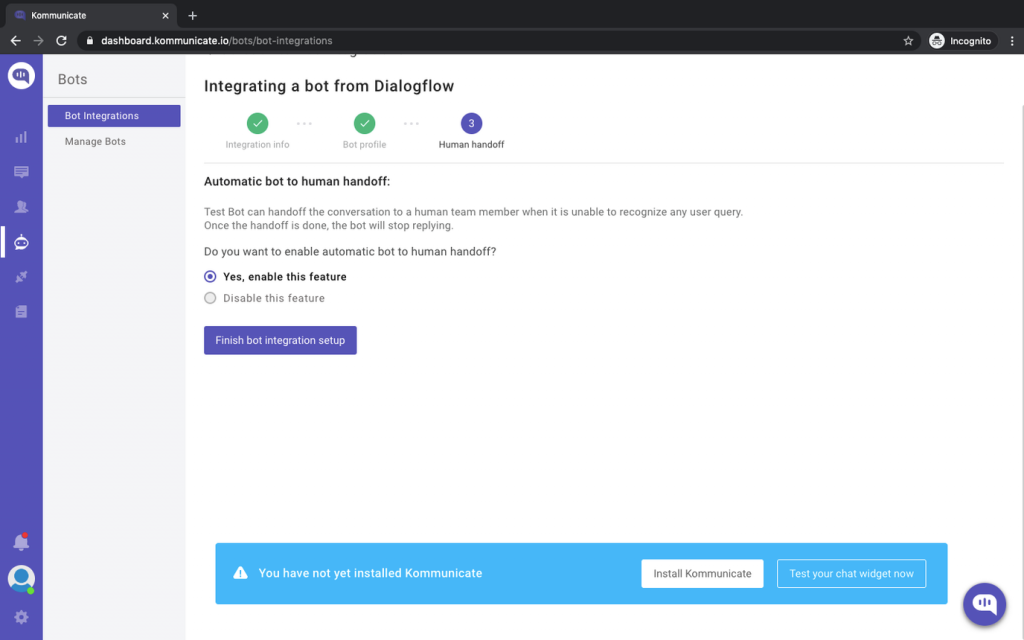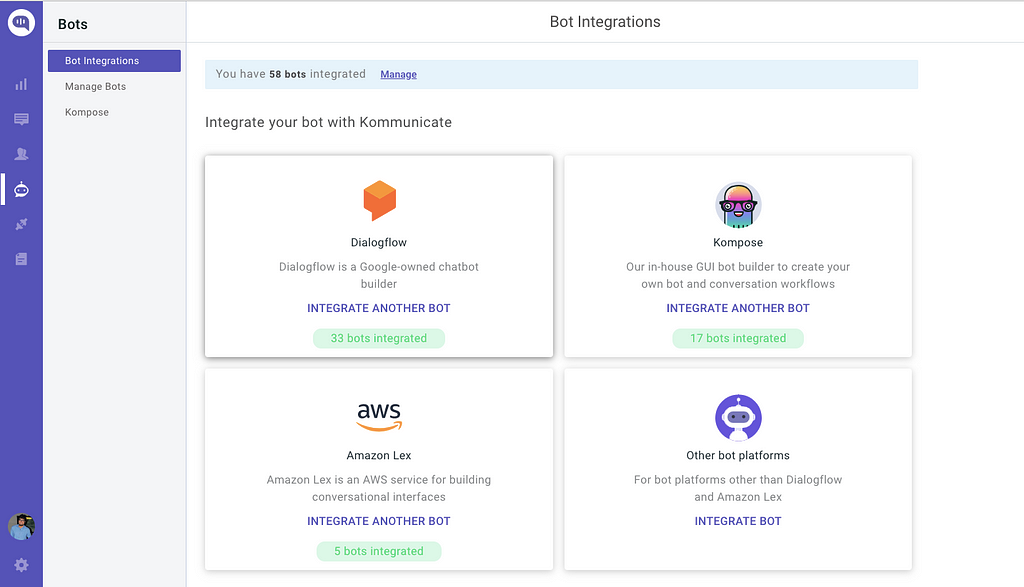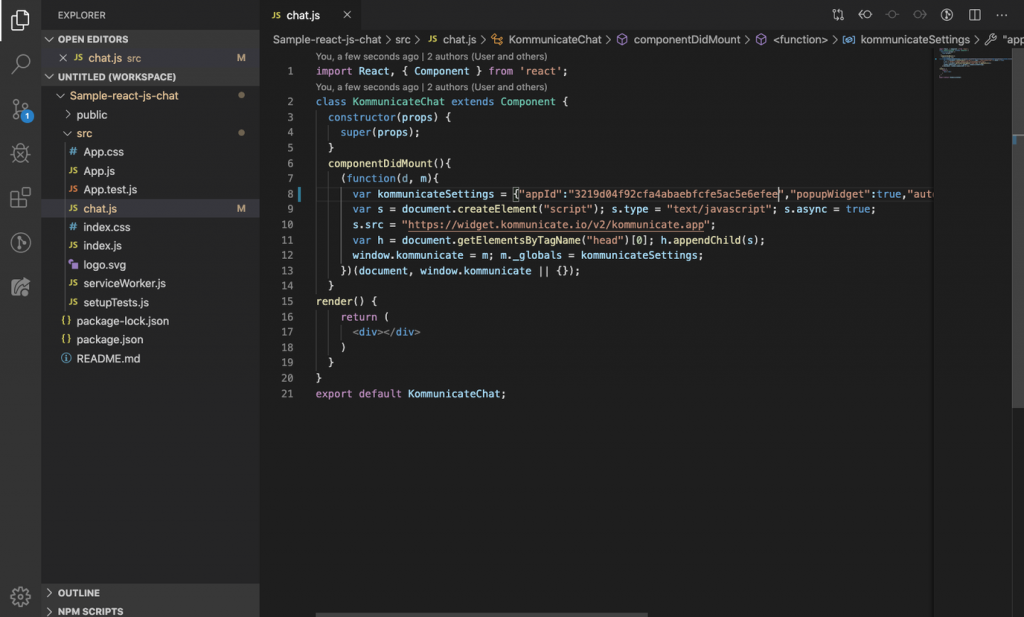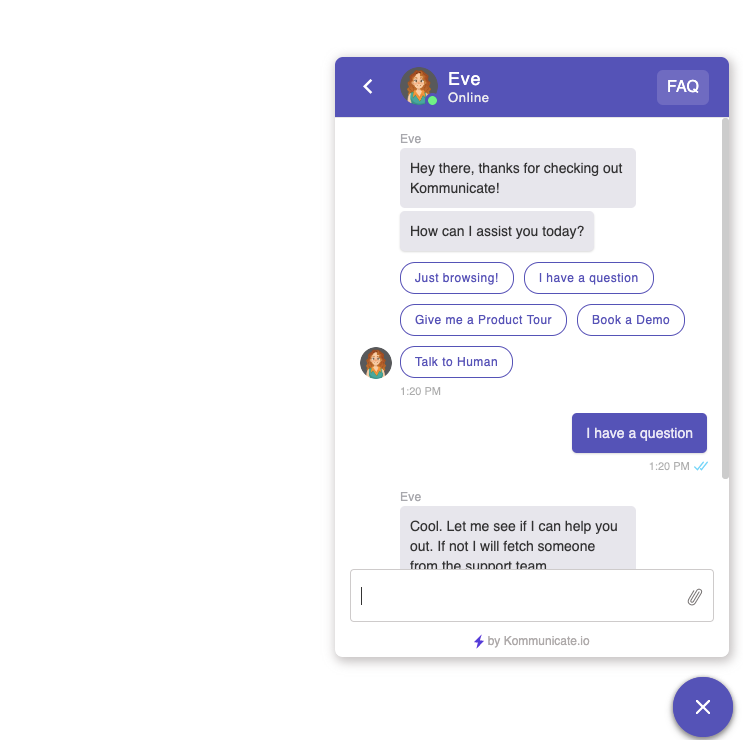The problems of traditional customer service Customer service can be a very time-consuming and expensive daily task for large companies, especially nowadays when customers are more demanding than ever in terms of high-quality personalized care, around the clock, in multiple channels and devices, and sometimes even in different languages.
A lot of companies can’t keep up with it anymore, not just because of time and money, but also because of the limited capacity of their customer care.
Then there is also the problem that it’s hard to monitor and analyse the KPIs that exist for measuring the quality of customer service, such as the CSAT (Customer Satisfaction) and NPS (Net Promoter Score).
Business goals Most companies, with digital customer care, have various goals for the optimization of their digital service, such as reducing costs, increasing their accessibility for their customers (in terms of languages, times, devices and channels), while also retaining, or if possible, even increasing the customer satisfaction.
While pursuing these goals, it is also important to measure the effectiveness of certain changes made along the road. In this article, we will go over each of these goals, and how you can achieve them with the help of Flow.ai.
Increased reachability Multiple channels A lot of companies get contacted by customers on different channels, such as WhatsApp, Messenger, Twitter, on their website or even by phone.
To provide the optimal experience, you want to make it as easy as possible for all customers to get in touch, so they can get the help they need without having to do too much effort for it. But with all these different channels, it can become a bit messy and confusing for customer service agents to keep up.
By using Flow.ai’s Omnichannel design, it’s easy to create one single multi-channel chatbot for all of required channels.
When a customer requires the assistance from an agent, the agent doesn’t need to go over to that specific channel, but he or she can simply use the chatapp.
With the omnichannel bot builder design, you also have the ability to make sure that your bot is optimized for each channel by making some channel-specific adjustments.
If you have flows in Messenger or Web Widget for example where you are using a carousel, which is currently not supported (yet) by WhatsApp, you might want to adjust the flow a bit for WhatsApp. Instead of a carousel you could use textual selection lists to get a similar result while getting around the channel limitations.
Omnichannel chatbots In multiple languages Creating a bot that speaks both English, French and Spanish may sound like it’s very complicated and time consuming, but due to Flow.ai’s multilingual design, you only have to create the bot for a single language.
You can create all flows, entities and intents in English for example, and when you are finished all you need to do is add the other languages you need, and the platform will automatically translate the whole both to those languages.
There is no limit to how many languages you can add. After translating, you get the opportunity to check if everything is translated correctly before approving the translation. This makes sure you can easily detect any potential translation errors before launching your bot.
Multilingual chatbots This Multi language solution isn’t just great for countries like Belgium and Canada, where they speak multiple languages, but it can also be very useful for other countries as well, since not everybody in a country is speaking the same language. In countries where English isn’t the native language, like the Netherlands, you still have a lot of people who use that language when communicating online.
As a result, it is optimal for Dutch companies to be accessible in both the Dutch and the English language. Those companies could even extend their accessibility even more by also adding commonly used languages from immigrants as well, like Polish, and languages from neighboring countries (French and German). Besides improving the accessibility this also makes it easier for agents since the bot can handle the conversations in languages they aren’t familiar with.
24/7 – Even during peak hours A chatbot doesn’t need to sleep or have breaks, unlike human agents. This makes it easier for companies to be accessible around the clock. When the customer has a specific problem that still needs to be solved by a human agent, the bot can still be helpful by taking the beginning of the conversation off the hands of the agent.
The bot can already ask for contact information so it becomes easier for the agent to approach the user when he or she goes back to work. The bot can already ask for example the order number and a description of the question or problem as well, and show it to the agent.
This way the agent doesn’t need to ask for this information anymore, which saves time and thus improves the productivity of the agent and the customer journey.
Many companies tend to struggle with their customer service capacity during busy periods like Christmas, Black Friday or when they release a new highly anticipated product. During these annually recurring periods, chatbots can offer a great amount of support to the capacity of the whole customer service by automating frequent conversations.
This enables the agents to even be accessible to anyone who needs personal assistance, even during those overwhelmingly busy times.
Business Hours Chatbot More profit Decrease in costs It speaks for itself that making agents manually type every response for all those repetitive conversations with your customers isn’t the most cost-effective method out there. Some companies try to make this process more efficient by creating a list with default answers to common questions, so the agents can copy and paste them to increase their working speed.
If you already have such a list, why not automate it? This saves even more time from your agents, so you need less of them and save unnecessary costs.
If you already have such a list of common questions with default responses for your agents to copy, or just a regular FAQ, we can help you convert it to a chatbot in just a few clicks with the help of the free FAQ2Bot tool. This decreases the development time for the bot and thus also saves costs.
FAQ 2 Bot Increase in revenue A higher customer satisfaction often leads to more sales, and thus increases the revenue. We will discuss later how chatbots can give a positive boost to the customer experience, but there are also other ways how bots can raise the revenue of your company.
Another great way for selling more products is by allowing your customers to make purchases within the chat, for example by adding the Stripe Integration to your chatbot. If your customers have to do less effort, they are more likely to buy something. You can also add upselling and cross-selling techniques within the chatbot to boost the sales even more.
Make payments with Chatbots Retaining or even increasing the customer satisfaction Personalization Personalizing the contact with your customers is a great way to make them feel more important and shows your company actually cares about them. It also opens possibilities for increasing the conversion rate. For example you have a company that sells shoes. If you already know you are chatting with a male customer, you can automatically show him men’s shoes instead of also showing women shoes, because the chance he is looking for shoes for males is higher.
On some channels, like Messenger, the chatbot has access to some personal information from the (Facebook) profile of a user, like someone’s name, language and gender. The bot can automatically use those information in its responses by using string templates.
When you need more information you can simply let the bot ask for it and extract data from the response of the user. That way, it is even possible to personalize the conversation when the customer is anonymous.
Personalize Chatbot Experiences Handling the unknown Of course, we all know that in the early stages of chatbots, there were some bots that were malfunctioning so much that they decreased customer satisfaction. They didn’t always correctly understand the message from the customer, so they gave inappropriate answers, or they kept saying something like “I didn’t understand that.” until the customer became frustrated and left the chat. The bots learnt from those mistakes and kept on improving over the years.
These days chatbots are much better in understanding complex messages, and when it still occurs that the bot doesn’t, it knows better how to handle the situation in such a way that customer satisfaction doesn’t decrease. Some solutions are providing topics to choose from or immediately triggering a handover.
This unknown message can also be sent to an agent so he or she doesn’t have to ask for it again after a handover has taken place. Learn more solutions for when the bot doesn’t understand a specific message in How to handle the Unknown: What to do when your chatbot fails?.
Handle Chatbot Failure Faster response times and increased accessibility Chatbots can respond faster than human agents, so the customers get the answers to their questions faster. This is especially the case for more technical tasks, like searching for the customer information within a database, which can be time-consuming for the agent.
Generally speaking, the faster someone has their answer, the happier someone is with the service. The increased accessibility also contributes to a higher customer satisfaction since it reduces the effort someone has to do to get into contact with the company like we already explained earlier in this article.
More focus on complicated problems Since the agents have to spend less time on easy and repetitive tasks because of the addition of a chatbot, they have more time to focus on the more complicated problems. This way the customers who need help with hard and time-consuming problems can be helped without the agent having to be afraid of not being able to help others since the bot can do the simple work for him or her in the meantime.
Detecting points of improvements within the customer journey During a conversation, the bot can automatically collect a lot of useful information, such as which questions are asked the most, or which problems are most common with customers. When the bot shows your company is getting too many similar questions about a certain topic, you might want to change something in the communication with the audience.
For example, when you keep getting questions about your opening times, you might want to show them on your homepage. If the bot didn’t show you got so many questions about this topic, you might have never been aware it wasn’t clear to your customers.
If you keep getting complaints about your delivery times, it might be a good idea to somehow reduce them. When customers keep saying some of your products are malfunctioning, you’ll need to have a look at them and maybe even redesign them. These are just some of the many points of improvements within all aspects of your company that the bot can detect.
Measuring the effectiveness Tags and Feedback Flows Measuring commonly asked questions and problems isn’t all you can measure within your chatbot. It is also important to measure the effectiveness of the bot itself. By adding a feedback flow to your flows, you can detect if the bot is successfully helping people solve their problems or providing the right answer to their questions.
When the customer says the bot wasn’t able to help them, you can automatically let the bot trigger a handover, so the customer still gets the required support. By adding tags, you can also see which flows the user has gone through in that specific conversation to see where it went wrong. This way, you can easily detect the weak spots of your bot and improve them.
The Feedback Flow Analytics within the platform One of the features of Flow.ai’s chatbot development platform is Analytics, where you can see graphs of your daily interactions, takeovers, received and sent messages (which can also be separately shown by the bot or integrations, by users and by agents), engagement, sessions, sentiment and the total number of users. You also have the ability to export the data.
Chatbot Analytics External Analytics software You can also analyze the chatbot performance by integrating your bot with external analytics software like Dashbot, Google Analytics, Chatbase, InSocial or any other tool in combination with Zapier. For tracking how many persons click on the links within the chatbot, you can use Google’s Campaign URL Builder to add UTM tags and monitor it in Google Analytics.
Export data to an external database If you prefer having an overview of your chat data within an external database like restdb, we can help you get started in no-time with the knowledge base articles How to integrate your chatbot with a database and How to Retrieve data from a database.
It’s also possible to send your data automatically to Google Spreadsheets. Watch the tutorial video below to easily set it up.
How to get started The first step is to signup on Flow.ai. After that, you can select one or more templates. Those templates are fully customizable and help you get a better understanding of how certain flows, intents and entities are made.
If you are new to creating chatbots, we recommend watching the Beginners Tutorials playlist first. When you are starting to get the hang of it, you can continue learning some more advanced use cases from the Intermediate Tutorials playlist.
There is also extensive documentation, which can give you a headstart as well.
We also recommend joining the Slack Support Channel. It’s a great way to get answers and inspiration, together with around 1000 other bot builders from all around the world!
